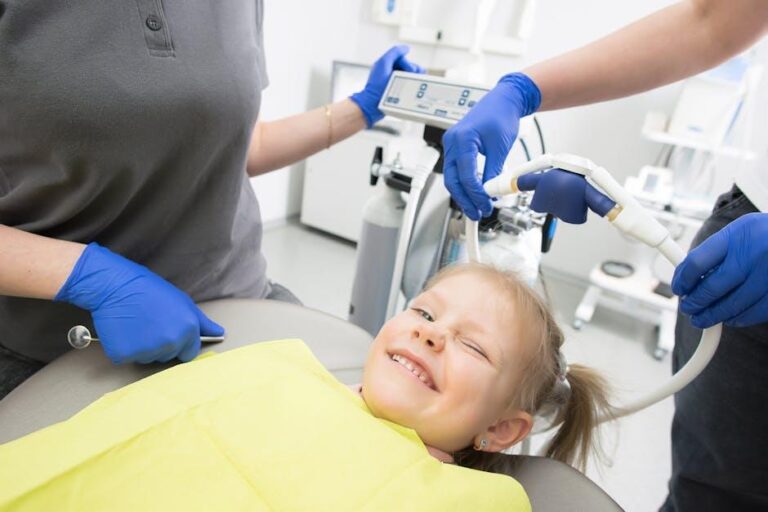1 in 3 Kids Has Dental Problems, Poll Finds – U.S. News & World Report
Understanding the rise of pediatric dental issues and how parents can safeguard their children’s oral health.
Introduction
A recent poll highlighted a concerning statistic: 1 in 3 kids in the United States faces dental problems. This revelation underscores the critical importance of pediatric dental care and awareness. Children’s oral health is a fundamental aspect of their overall well-being, yet many remain vulnerable to cavities, gum disease, and other dental issues. In this article, we dive deep into the findings of the poll, explore common dental problems in children, and provide actionable guidance for parents and caregivers to ensure healthy smiles for their little ones.
Overview of the Poll Findings
The poll, conducted nationwide among parents and guardians, surveyed the prevalence of dental issues among children ages 2 to 12. Here are the key takeaways:
- 33% of children reported having at least one dental problem, ranging from cavities to gum inflammation.
- The most common issue identified was dental cavities, affecting nearly 25% of children.
- A significant portion of children with dental problems lacked regular dental checkups.
- Socioeconomic disparities played a role, with children from lower-income families experiencing higher rates of dental ailments.
These findings raise pressing questions about accessibility, preventive measures, and education regarding children’s oral health.
Common Dental Problems in Kids
Understanding the typical dental problems children face can help parents recognize early warning signs and seek timely care.
| Dental Problem | Description | Common Symptoms |
|---|---|---|
| Dental Cavities (Tooth Decay) | Damage to the tooth enamel caused by bacteria and sugar exposure. | Visible pits or holes, sensitivity, tooth pain |
| Gingivitis | Inflammation of the gums, often due to plaque buildup. | Red, swollen gums, bleeding during brushing |
| Tooth Sensitivity | Sharp pain from hot, cold, sweet, or acidic stimuli. | Discomfort while eating or drinking certain foods |
| Malocclusion (Misaligned Teeth) | Improper alignment of teeth impacting bite and appearance. | Difficulty chewing, speech problems, jaw pain |
Causes of Dental Problems in Children
Dental issues in kids usually stem from a combination of factors:
- Poor Oral Hygiene: Insufficient brushing and flossing allow plaque buildup.
- Unhealthy Diet: Sugary snacks and drinks fuel cavity-causing bacteria.
- Lack of Regular Dental Visits: Missed checkups delay identification and treatment.
- Inadequate Fluoride Exposure: Fluoride strengthens enamel; lack thereof weakens resistance.
- Socioeconomic Barriers: Limited access to dental care facilities and education.
Practical Tips to Prevent Dental Problems in Kids
Prevention is always better than cure. By adopting simple habits, parents can significantly reduce the risk of dental problems for their kids:
- Establish a Daily Oral Care Routine: Encourage brushing at least twice daily with fluoride toothpaste and flossing once a day.
- Limit Sugary Foods and Drinks: Minimize sweets, sodas, and fruit juices that contribute to tooth decay.
- Schedule Regular Dental Visits: Take children for checkups every six months or as advised by their dentist.
- Use Fluoride Products: Consult your dentist about appropriate fluoride treatments or supplements.
- Promote Healthy Eating Habits: Include crunchy fruits and vegetables that stimulate saliva production and help clean teeth.
- Lead by Example: Children mimic adults—practice good oral hygiene yourself.
Case Study: Impact of Early Dental Care on Children’s Health
Consider the case of Emma, a 7-year-old who struggled with frequent cavities until her parents implemented consistent dental care practices:
- Emma began brushing twice daily with a child-friendly fluoride toothpaste.
- Her diet was adjusted to reduce sugary snacks and increase healthy options.
- The family scheduled dental cleanings every six months, allowing early detection of potential issues.
Within a year, Emma’s oral health improved dramatically—no new cavities and healthier gums. Emma’s story highlights the transformative power of proactive dental care in children.
Benefits of Maintaining Good Oral Health in Children
Good dental hygiene in childhood has long-lasting benefits, including:
- Prevention of tooth decay and gum disease
- Better speech development and chewing function
- Higher self-esteem through a confident smile
- A reduced risk of oral infections impacting overall health
- Establishing habits that promote lifelong oral wellness
First-hand Experience: Insights from Pediatric Dentists
Dr. Laura Stevens, a pediatric dentist in Houston, TX, shares:
“Many parents don’t realize how quickly cavities can develop in young children. Early intervention is critical. We advise starting dental visits by age one and focusing on preventive education—not just treatment.”
She also emphasizes involving children in their oral care routine in a fun and educational way to build positive associations.
Conclusion
The alarming finding that 1 in 3 kids in the U.S. suffers from dental problems is a wake-up call for parents, educators, and healthcare providers alike. Children’s oral health is foundational to their overall growth and quality of life. By understanding the common dental issues children face and implementing straightforward preventive measures, families can dramatically improve their children’s smiles and well-being. Regular dental checkups, a balanced diet, and consistent oral hygiene routines are key pillars in fighting pediatric dental problems. Let’s work together to ensure every child enjoys the confidence and health that come with a bright, healthy smile.


